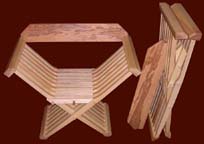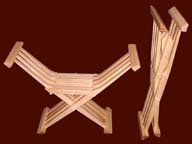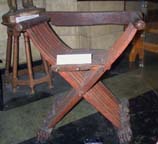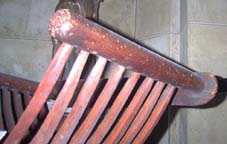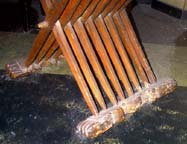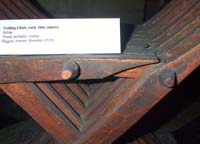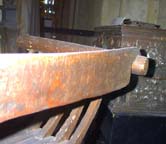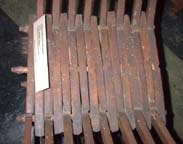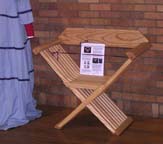|
Adaptations of 16th Century examples 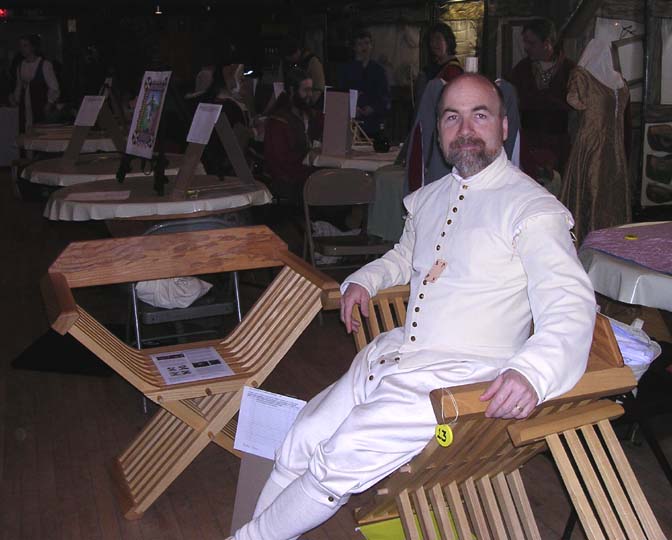 Max sits on his Medieval Arts & Science entry at the 2005 Northern Lights Pentathlon* |
|
The Savonarola is a sturdy folding chair, distinctive for its many criss-crossing legs which terminate in arm rests, and its interlocking wood seat. It first came into popularity in Florence during the later half of the 15th century, and quickly became a status symbol reserved for clergy and nobility. Sturdy, comfortable, and easy to transport; the Savonarola is just as practical today as it was during the Renaissance. They are also fun to design and build! I created designs based on several museum displays and photographs of period pieces, and then built four chairs and two stools. My Wife and I enjoy our modern adaptations in our Medieval-inspired living room, as well as in our SCAdian encampments. |
Click on the thumbnail pictures to view larger images.
